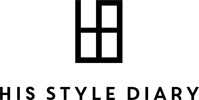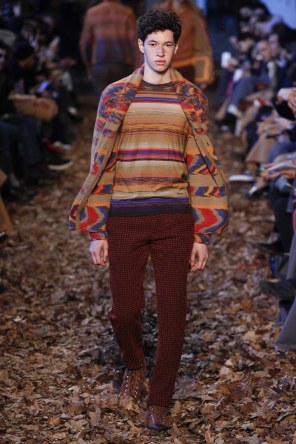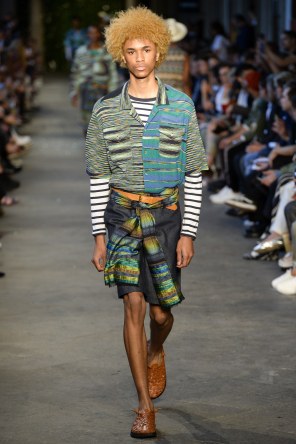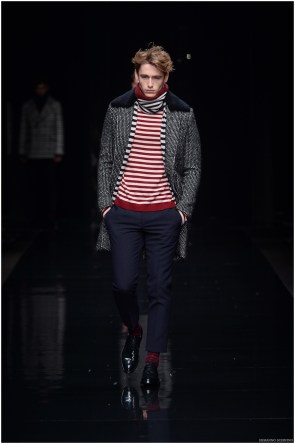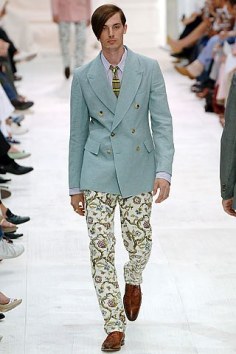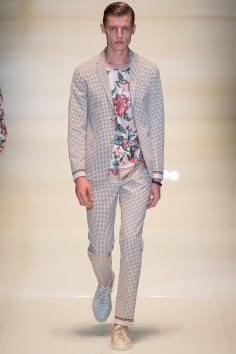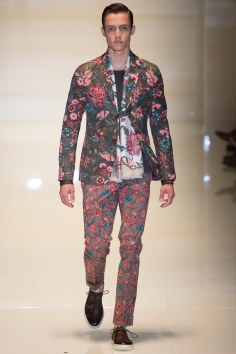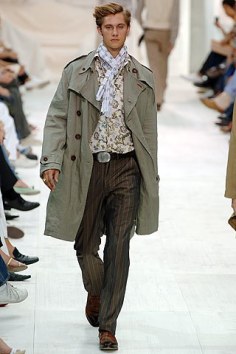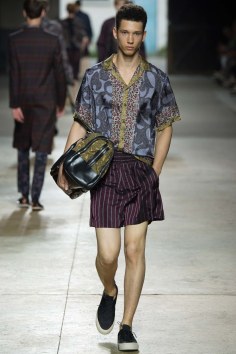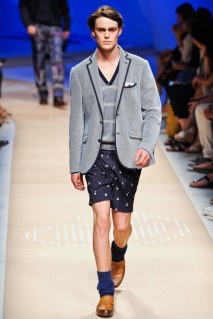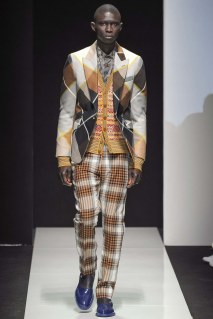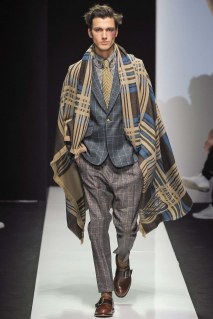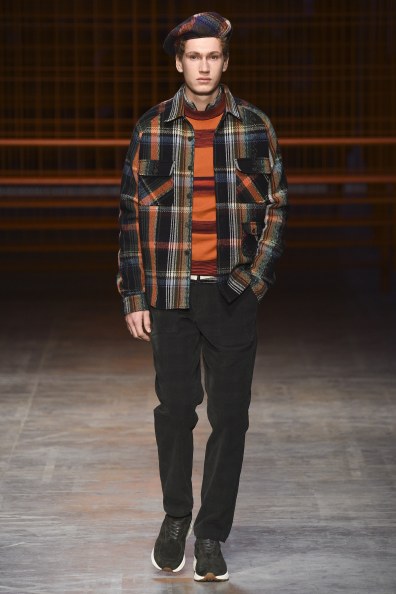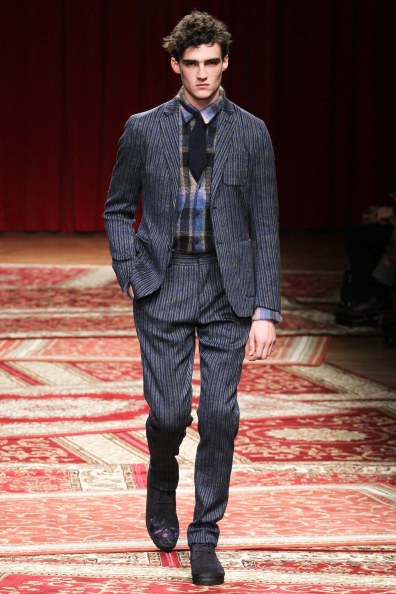Do men shy from patterns? Yes. Research has shown that men prefer sticking to simpler looks like monochrome outfits, embellished at most with a logo or marquee*. If you’re nodding, smile at that camera! Thank you for being part of our research. Fact is, it’s easy to get overwhelmed by the panoply of patterns available out there: stripes, checks, florals, paisley, waves, polka dots, repeated icons, gahhh! I’ll just have that gray t-shirt and those jeans, thank you very much. Picking a pattern is enough of a headache, much less mixing them. After all the effort, you might still end up with disapproving looks on public transport, day-long self-doubt, and an oath never to stray beyond the color-blocked confines of Uniqlo.
*Not scientific whatsoever. Non-existent, really.
Fear not, gentlemen. You don’t have to get the jitters on the occasions you allow yourself to imagine wearing that sharp, patterned outfit on a window display. What you need is a basic class on what to embrace, what to avoid, and what goes with what. You can sign up for this easy guide by providing us with your credit card details. Nawww, I kid. Just give us a like on Facebook. And share this post. Or else. Of course, if you’re already an Eclectic dresser – someone who loves to jumble different styles and looks into one splendiferous outfit – good for you! Feel free to check out our other posts, especially this one about new grooming systems for men.
Where do I start?
If you’re a plain dresser – not a bad thing at all, see these posts – it’s advisable to start by choosing one pattern first. For example, florals, which you can learn more about here. But if you’re already someone who wears patterns, and you’d like to know how to mix patterns like a pro, read on.
No surprise: the easiest patterns to mish-mash are checks. They are the most quintessential of men’s patterns, and the most commonly used in menswear. The best part is, no matter how you match different weights or styles of checks (think grid paper vs plaid), their nifty right angles ensure they always match visually.
The trick, then, to look really good matching different checks, would be to blend the colors. Which do you see first – color or check? Most likely the former. So, as with any plain, unpatterned outfit, follow the rules of matching color. Since checkered patterns can often feature two colors, if you’re matching a checkered tie with a checkered shirt and a checkered blazer, you may be working with six possible colors. Reduce that to three at the most. For a more conservative look, the following is a good example. Notice how the orange in the shirt goes with the burnt orange in the jacket? If you want to spruce that outfit up even further, add a woven tie with navy and white checks that will go handsomely with the jeans.

Let’s go bolder!
Ready to amp things up? Up to now we’ve only discussed the upper body – but what about checked pants? Glad you asked, because the jeans in the above outfit can also be swapped out for a pair of pants in the same design as the blazer, and it’ll become a formal suit. If you’re even more adventurous, let’s look at “mis-matched” outfits. These are some high-fashion, runway looks, but they illustrate the point earlier about color. If the colors go, chances are mixing different styles of checks will look good.
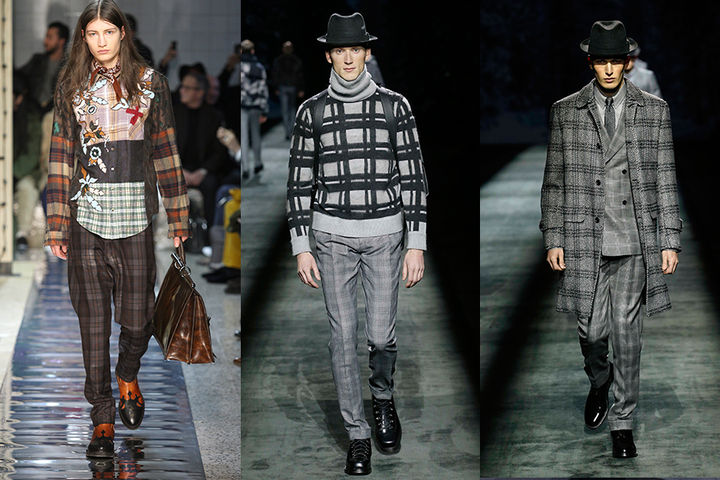 The above employ a monochromatic mixing of colors – dark browns with light browns, greys with blacks.
The above employ a monochromatic mixing of colors – dark browns with light browns, greys with blacks.
Even when the colors don’t necessarily go, as is the case below, the squares in the patterns pull the outfit together.
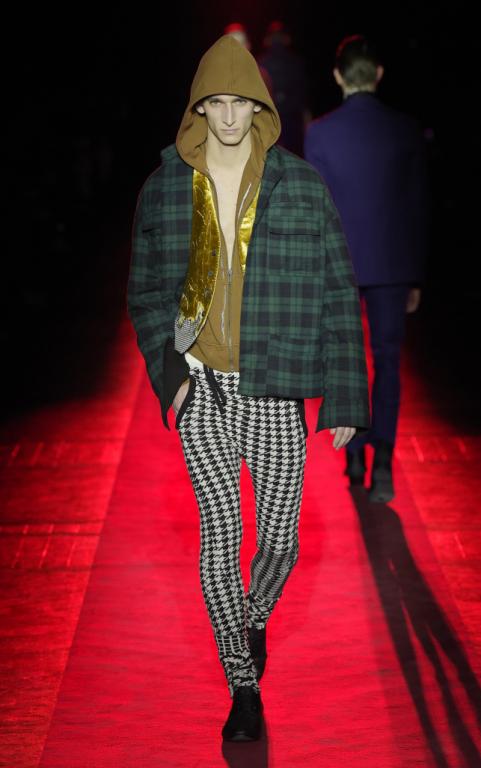
What about stripes?
Stripes are also popular – but use them with caution. Vertical stripes can make a lanky guy look scrawny, while horizontal ones can make a large guy look out of shape. Mixing and matching different stripe weights can also be tough, and you may end up looking like you’re in your pajamas. Not a good thing, unless that’s the look you want.
While stripe-on-stripe is hard to pull off, checks can be a good fit with stripes because of the lines present in both. Color rules apply here, as usual, but also pay attention to the brightness of each pattern. Ideally, one pattern should stand out (bright), and the other should complement (muted). You can go from something as simple as matching a grid-square business shirt with a horizontal wide-striped wool tie, to something wilder like a pair of trousers with Malcolm tartan matched with a dark green and white candy-striped shirt. Don’t forget your socks, which is an easy way to play with patterns without too much commitment.
What about florals?
Florals are organic prints, and they tend to go best with other florals. If you own a floral shirt, don’t default to a pair of plain pants to match it with. Throw on a pair of pinstripe pants! Again, the rule of contrast applies here. If the floral shirt has large-format, overall prints, put on a pair of pants with faint pinstripes. If the floral shirt is small-format in its patterning, go wild and put on some windowpane pants! Match those colors, and you’ll be golden. Or, match floral with floral, as is commonly employed on the runway.
Rules are rules for a reason
The possibilities of matching patterns are endless. How to mix patterns is a constant discussion, even on the runway, whether the designers are seasoned or new. Clean geometric patterns like checks and stripes, or fancier stuff like paisleys, animal prints, or visual art, all submit to one basic mantra: color. If the colors go, the outfit will look coordinated. Either pick a base color which both top and bottom feature, or pick a “feature” color that appears significantly in both the top and the bottom. Last but not least, make sure the patterns work on you: your body type, your personality, the occasion you’re dressing for. Again, these are all old rules that apply every time – just add pattern! I shall leave you with more runway looks as fodder for your next wardrobe adventure. Some brands to consider looking up – Vivienne Westwood, Walter van Beirendonck, Dries Van Noten, Etro, Ermanno Scervino, Paul Smith. Bon courage!

